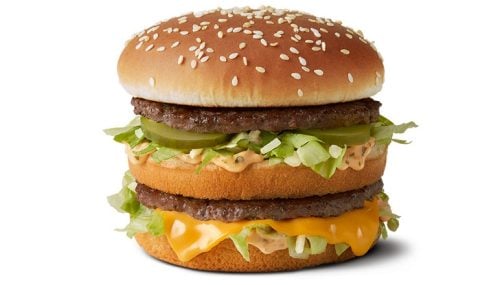Big Mac Economics
Big Macs statistics can actually tell you something about economic levels and currency exchanges—can you believe that? It’s true, and a lot of is based on the value of Big Macs and how you can find Big Macs served all over the world.
Contents
The World-Wide McDonald’s
It’s true that when it comes to burgers, arguably the most famous of them all is the venerable Big Mac. That starts with the number of McDonald’s restaurants. You will find a total of 39,198 McDonald’s restaurants all over the world. That’s a number that has steadily increased each year, over the last 16 years.
These restaurants are spread over 120 countries The 120th country to open a McDonald’s is Kazakhstan. It’s the first country to do so in the Centre Asia region, so more countries may follow.
The Big Mac Popularity
Of all the menu items that McDonald’s serves, arguably the most popular (aside from the French fries), is the Big Mac. Find any person you know, and the chances are very good that they’ve tried out a Big Mac at least once in their life.
They may not match the Big Mac obsession of Donald A. Gorske of Wisconsin, who ate his 30,000th Big Mac back in 2018, but it’s also very likely that they’ve had more than a single Big Mac. After all, it’s great—once you’ve tried a Big Mac, it’s not surprising if you want another one someday.
McDonald’s can’t really say for sure how many Big Macs they’ve sold all in all so far, but then again, Big Macs have been around since 1967. But McDonald’s has at least confirmed that it about 550 million of these burgers each year—and that’s just in the US alone. Adweek also says that in the US, Americans eat about 17 Big Macs per second!
The Big Mac Index
So, what has all these facts relate to economics and currency exchanges? It all started with The Economist, which came up with the Big Mac Index back in 1986. Basically, they used the ubiquitous Big Mac as a basis to check the proper value of each nation’s currency, based on US prices. This is to see if the currency is properly valued when it comes to their value in US dollars.
This may have been a tongue-in-cheek tool that The Economist invented just for fun, but it makes quite a bit of sense. After all, using the Big Mac works, since it’s everywhere. It’s just like the US dollar, which you can use as valid currency for most countries you’re likely to visit.
It’s based on the principle of purchasing-power parity. If a product in the US is priced at $1, and that same product is sold in another country for 50 pesos, then you might say that $1=50 pesos. That ought to be the exchange rate.
But if the dollar to peso exchange rate is $1=60 pesos, then you know (or at least estimate) that the peso in this case is undervalued. If, on the other hand, the exchange rate is $1=40 pesos, then the peso is overvalued.
This is the simplistic explanation of this whole tool, and some financial types dive even deeper into the subject matter. Heck, they even factor in stuff like the GDP and labor costs, just to get a handle into how currency values may fluctuate in the future.
It may be too deep a subject for many of us, but’s it’s fun to contemplate, isn’t it?
How Much Do Big Macs Cost?
This may be more relevant for the majority of us, since we do need to fit it into our budgets. In the US, a Big Mac costs $5.04 on average. But as you may have realized by now, prices of the Big Mac vary all over the world, when you convert the local currency to US dollars.
So, let’s check out a few Big Mac prices you may encounter as you go on a worldwide tour. Some countries offer lower prices. South Africa, Romania, and Malaysia all sell Big Macs for less than $2.50. That means you can go there and buy 2 Big Macs for the price of 1 (back in the US). The cheapest Big Mac can be found in Russia, where it sells for just $2.04.
But other countries sell Big Macs for higher prices. If you eat a Big Mac in countries like Switzerland, Norway, and Sweden, then you better just enjoy the meal. Don’t dwell in how these Big Macs cost at least $6 each. Don’t think about how it’s much cheaper in the US, and enjoy the fact that you’re traveling in another country!



